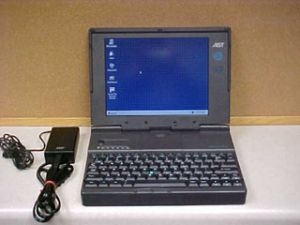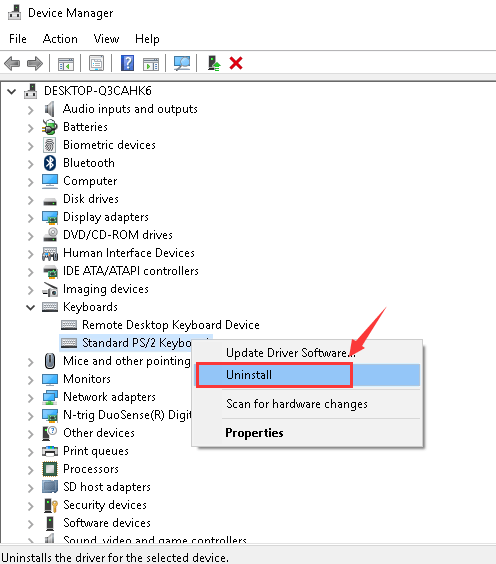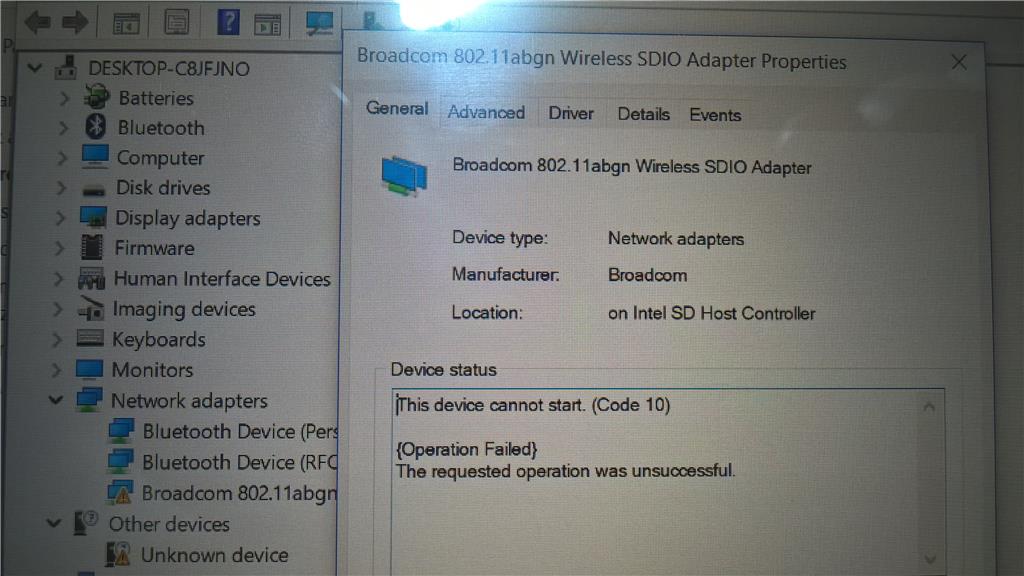- This package provides Realtek Audio Driver and is supported on S145-15AST, S145-14AST and running the following Operating Systems: Windows 10 (64-bit) Lenovo Inc. laptops-and-netbooks ideapad-s-series-netbooks S145-15AST Laptop (ideapad) S145-15AST Laptop.
- Drivers & Downloads. Locate drivers, user guides and product specifications for your Gateway technology. Recycle your PC, peripherals, electronics and batteries. Learn more about our environmental commitment. Get support via your Windows 10 device Learn More. Site Map; About Us; Contact Us.
Gamers need a sturdy, powerful laptop. Explore a variety of gaming laptops with high-end processors and graphics that are on par with your traditional desktop computers. If you are in two minds about choosing a laptop or a tablet, go for a 2-in-1 model. You can use it as a tablet that flips into a laptop when you want.
| Type | Private |
|---|---|
| Fate | Intellectual Property sold in 1999, dissolved in 2001 |
| Founded | 1980 in Irvine, California, United States |
| Founder | Albert Wong Safi Qureshey Thomas Yuen |
| Defunct | 2001 |
| Headquarters | Irvine, California, United States |
| Website | astmachines.com |
AST Research, Inc. was a personal computer manufacturer, founded in Irvine, California, in 1980 by Albert Wong, Safi Qureshey and Thomas Yuen (the name comes from the initials of their first names: Albert Safi Thomas).[1] In the 1980s AST designed add-on expansion cards, and toward the 1990s evolved into a major personal computer manufacturer. By the late 1990s AST was acquired by Samsung, but was forced to close shortly after due to a series of losses.
History[edit]
AST's original business was the manufacture and marketing of a broad range of microcomputer expansion cards, later focusing on higher-density replacements for the standard I/O cards in the IBM PC. A typical AST multifunction card of the mid-1980s would have an RS-232 serial port, a parallel printer port, a battery-backed clock/calendar (the original IBM PC did not have one), a game port, and 384 KB of DRAM (added to the 256 KB on the motherboard to reach the full complement of 640 KB) - marketed under the product name 'SixPakPlus'. A similar expansion card was produced for the 8-bit Apple II, named the AST Multi I/O, which offered a serial and parallel interface, plus a battery-backed clock/calendar.
In 1987 AST produced a pair of expansions cards for the Apple IIGS computer: The RamStakPlus, a dual RAM/ROM memory expansion card; and the AST Vision Plus, a real-time video digitizer card. The latter card was eventually sold to Silicon & Software and licensed and sold through Virtual Realities (and later LRO and then Alltech Electronics). AST Research also produced for the Macintosh line the Mac286, a pair of NuBus cards containing an Intel 80286 and RAM, allowing a Macintosh to run MS-DOS side by side with its existing operating system. These cards were announced in March 1987 alongside Apple's Macintosh II line. The product line was eventually sold to Orange Micro, which developed the concept further.
As PC manufacturers improved the integration of peripheral controllers on their motherboards, AST's original business began to shrink, and the company developed its own line of PCs, for the desktop, mobile, and server markets.
AST was one of the members of the Gang of Nine which developed the EISA bus.
In 1992 AST became a Fortune 500 company at place 431.
AST computer's reliability was considered close to that of quality leaders Compaq, Gateway, and IBM.[citation needed] AST gained a decent share of the PC market, but never came close to overtaking Compaq and Dell. During 1992-1995, AST owned the largest market share in China with Legend (now Lenovo) as the largest local reseller of AST computer.
In 1993 Radio Shack sold its computer manufacturing division to AST,[2] and in 1994 they reached a deal to sell AST computers in Radio Shack stores.[3] A year later, the electronics chain started selling IBM-brand computers instead.[4]
AST's fortunes shrunk due to the strategy of offering premium models in an increasingly competitive personal computer market, while Compaq Computer Corporation and other top-tier manufacturers slashed prices to go head-to-head with the cheapest clones.[5] The failure of AST to recognize the movement towards the commoditization of the PC contributed to its downturn. AST insisted on developing and using its own components in the PCs it produced, instead of those of specialized OEMs. One often used saying at AST, in an attempt to dismiss such competitors, was 'the best technology they have is a screwdriver.'[citation needed]
By the mid-1990s, AST had severe problems in the highly competitive PC market. Revenues for 1996 were $2.104 billion, down from 1995 revenues of $2.348 billion.[6]
AST Research was acquired by Samsung in 1997.[7] At the time, Samsung owned 46 percent of AST and had offer to buy remaining common shares.[8] Prior to this move, Samsung had already owned a substantial stake and provided considerable financial support to keep AST going. By December, the number of employees was down to 1,900. In 1999, Samsung was forced to close the California-based computer maker after a string of losses and a mass defection of research talent.[9][8][6][10] Samsung had invested one billion US dollars in the company. The AST name was sold to Packard Bell.[10]
AST sponsored the English football club Aston Villa from 1995 to 1998.
AST Computers, LLC[edit]
In January 1999, the name and intellectual property were acquired by a new company named AST Computers, LLC.[citation needed]
AST Computers, LLC was a private company founded in 1999 when Beny Alagem, founder of Packard Bell Electronics, bought the name and intellectual property of AST Research, Inc.
AST Computers disappeared from the market in 2001.[citation needed]
As of early 2011, the dormant AST trademark appears to be being relaunched by a new, independent company named DATA ACCESS[11] based in France.
References[edit]
- ^Kotkin, Joel (February 1, 1986). 'The Hottest Entrepreneur In America Is The 'smart Team' At Compaq Computer'. Inc.com. Retrieved April 5, 2020.
- ^'Radio Shack To Sell Tandy Division To Ast'. Orlando Sentinel. May 27, 1993.
- ^'Company News; Tandy's Radio Shack to Sell AST and Packard Bell PC's'. The New York Times. September 20, 1994.
- ^Dan Margolis (August 10, 1995). 'Radio Shack Pact With IBM Deals Blow to AST Research'. Los Angeles Times.
- ^Lawrence M. Fisher (January 31, 1997). 'Samsung Electronics Plans to Buy the Rest of AST Research'. The New York Times.
- ^ abChen, Elaine (February 3, 1997). 'Samsung in bid to buy all of ailing AST - Samsung Electronics offers to buy AST Research - Company Business and Marketing'. Electronic News. Archived from the original on March 27, 2006. Retrieved August 28, 2017.
- ^Miller, Greg. 'Samsung Set to Acquire AST Research'. Los Angeles Times. Retrieved July 1, 2020.
- ^ ab'Samsung's bid for AST'. Retrieved August 28, 2017.
- ^'Subscribe to read'. Financial Times. Retrieved August 28, 2017.Cite uses generic title (help)
- ^ abCain, Geoffrey (March 17, 2020). Samsung Rising: The Inside Story of the South Korean Giant That Set Out to Beat Apple and Conquer Tech. Crown. pp. 100–101. ISBN978-1-101-90726-9.
- ^'Trademark information for AST from USPTO - by Markify'. Archived from the original on September 8, 2012. Retrieved August 28, 2017.
« AST is a great brand name
and has been one of the early pioneers of the computer industry »
Beny Alagem, Founder of Packard Bell
AST: The Flagship of Innovation in the PC Era
AST: a 3-letter word that can’t be found in the dictionary but is lodged in our collective memory. AST: The Flagship of Innovation in the PC Era with an audacious manner worthy of a modern day start-up.

Today, AST is ready to be reborn and to once again bring a visionary project to fruition; this is its ongoing story…
1979: Three Friends and a Garage
The most beautiful stories often have humble beginnings: AST’s story is the tale of 3 ambitious friends who travelled from Asia to California to study sciences, and ended up being engulfed by the entrepreneurial spirit of their new host country where the sky was the limit. And so it came about that their initial 2.000 USD investment to tinker around with electronic circuits in a garage, resulted in the establishment of the world’s 3rd largest computer manufacturing company.
1980: A Vision with an Exemplary Implementation
Their idea was visionary! Indeed, IBM’s first Personal Computers were to be far more than just a short-lived hype….but quite rapidly clients starting requesting system updates. AST (an acronym of the 3 founding fathers Albert, Safi and Thomas) provided the solution in the shape of printed circuit boards. Far ahead of their competitors, they became a trademark.
1983: The Six Pack Plus – The Crowning Achievement of the Upgrade Cards
This card, including a watch, memory and a game port, was so significant that IBM itself distributed it from within its own network. This card represented 13 million Dollars worth of sales in 1983 alone, and that was only the start…
1985: The Ferrari Period

The founders risked all (the 1st check they received was a blank, and their houses were mortgaged) but ended up winning big: with a 135 million $ turnover that year, Ferrari engines purred on their driveways, but AST did not rest on its laurels and got geared up for their Next Big Move.
1986: A Consumer Brand is Born
Expansion boards running out of steam??? AST’s response was to start creating PCs! In light of stiff competition from giant adversaries like IBM, NEC and Compaq, the company resorted to offering exceptional value for money. The AST Premium286PC was sold with a complementary laser printer. AST’s gamble paid off; the competition scowled and the consumers were grateful.
1989: A Spot on the Podium
AST, with a 412 million Dollar turnover, became the world’s third largest player behind IBM and Compaq. This brand was so very new…. but AST sought market growth as far as Russia and that during the height of the cold war! With Europe and Asia already representing a quarter of their income, AST went truly global.
1990: Innovation Plus Innovation
A masterful double whammy: AST started offering modular architecture (the old chip being replaced within the same frame) and thereby became a Billion Dollar Company from 1991 onwards. AST also succeeded in Japan and made life difficult for NEC; the IT world had great admiration for this high-flying new comer of a different kind.
1993: Did You Say Touchpad?
AST’s strength lay in its speed of execution and its remarkable value for money, but also in its audacity! In 1993 they came out with a portable computer that could be converted into a touchpad. However, the product only received some moderate praise due to the fact that this was still the 20th century and the internet ecosystem didn’t exist yet. Despite the lack of success for their novelty product, AST’s daring stood out and demonstrated that it had what it took to be amongst the greats.
1995: The Apex
A 2.4 billion Dollars sales figure, a world-wide market presence, and a brand with geek-appeal that was also appreciated by the general public (the group even sponsored major football clubs such as, Aston Villa in Birmingham). AST basked in its glory…but its profitability declined as Samsung entered the arena and shifted the centre of gravity of the IT world to Asia.
1997: Samsung Acquires….and Closes Down AST
Ast Laptops For Seniors
In August 1997, Samsung purchased 100 % of AST but the venture was to be a failure. The Korean giant was unable to make AST profitable and in 1999 the AST brand ceased to exist.
1999: Like a Phoenix…
The brand was acquired by Beny Alagem, a former tank driver from Israel and, incidentally, the founder of Packard Bell. What was his objective? To turn AST into an ‘Internet-driven company’. The adventure lasted until the summer of 2001 and was limited to the sales of PCs and servers. Unfortunately, times had changed unfavourably whereby the new AST was unable to find its place and had to close up shop.
2014: AST – A Success Story?
Today, AST could potentially represent the beginning of a new challenge: audacity, innovation, flexibility, ambition … These values have been AST’s driving force in the past and will also be the reason behind future successes…
Ast Laptops For Sale

Ast Laptops & Desktops Driver Download For Windows 8.1
AST: Everything is possible!




